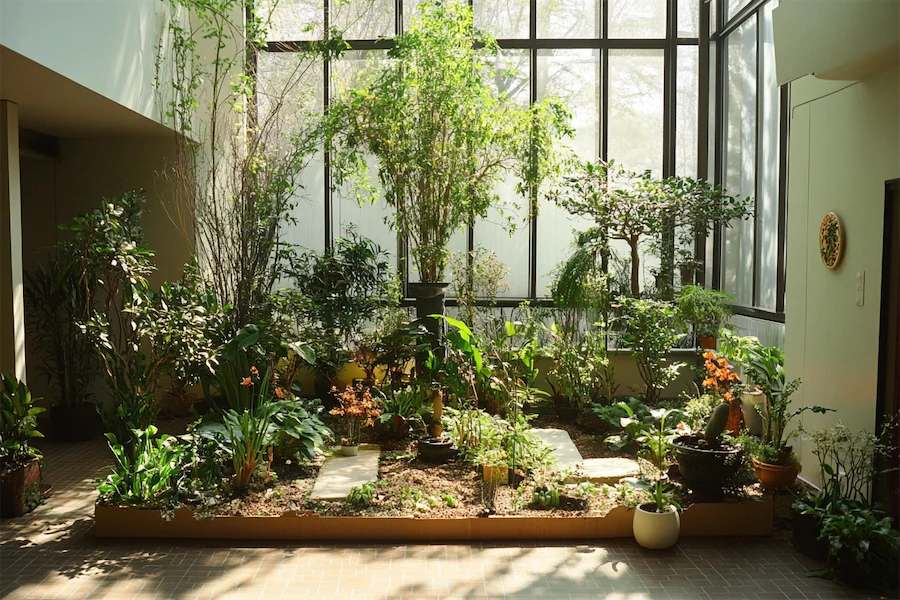Indoor gardening allows individuals to cultivate plants within their homes, bringing nature indoors and offering numerous benefits, including improved air quality, enhanced aesthetics, and the joy of nurturing living organisms. Whether you’re growing herbs, vegetables, or ornamental plants, indoor gardens can be tailored to fit various spaces and lifestyles.
History and Origins of Indoor Gardening
The practice of indoor gardening dates back centuries, with early examples seen in ancient civilizations that cultivated plants indoors for medicinal, culinary, and decorative purposes. Over time, advancements in technology and a growing interest in biophilic design—a concept that integrates nature into built environments—have popularized indoor gardening in modern homes and urban settings.
Key Features of Indoor Gardens
Indoor gardens can vary widely in design and complexity, but they often share common features:
- Controlled Environment: Indoor gardens allow for the regulation of factors such as light, temperature, and humidity, creating optimal conditions for plant growth regardless of external weather conditions.
- Space Efficiency: Utilizing vertical spaces, windowsills, or dedicated plant stands enables gardening in limited areas, making it accessible for apartment dwellers and those with minimal outdoor space.
- Aesthetic Appeal: Incorporating plants indoors enhances interior design, adding color, texture, and a sense of tranquility to living spaces.
Applications of Indoor Gardening
Indoor gardening serves various purposes, including:
- Culinary Uses: Growing herbs and vegetables indoors provides fresh, readily available ingredients for cooking, ensuring flavor and nutritional value.
- Air Purification: Certain indoor plants can help improve air quality by reducing pollutants, though their impact in typical home environments may be limited.
- Mental Well-being: Engaging with indoor plants has been shown to reduce stress, enhance mood, and increase productivity, contributing positively to mental health.
Considerations When Starting an Indoor Garden
When planning an indoor garden, consider the following factors:
- Light Requirements: Assess the natural light available in your space and choose plants that match those conditions. Supplemental grow lights can be used to provide adequate light for plants with higher light needs.
- Space Constraints: Select plants and containers that fit your available space. Vertical gardens or hanging planters can maximize space efficiency.
- Maintenance Level: Consider the time and effort you can dedicate to plant care. Some plants require minimal attention, while others need more frequent watering and maintenance.
- Pet Safety: If you have pets, ensure the plants you choose are non-toxic to animals. Many common houseplants can be harmful if ingested by pets.
Conclusion
Indoor gardening offers a fulfilling way to connect with nature, enhance your living environment, and enjoy the fruits (or herbs) of your labor year-round. By understanding the history, key features, and applications of indoor gardens, and by considering essential factors when starting, you can create a thriving indoor oasis tailored to your needs and preferences.
